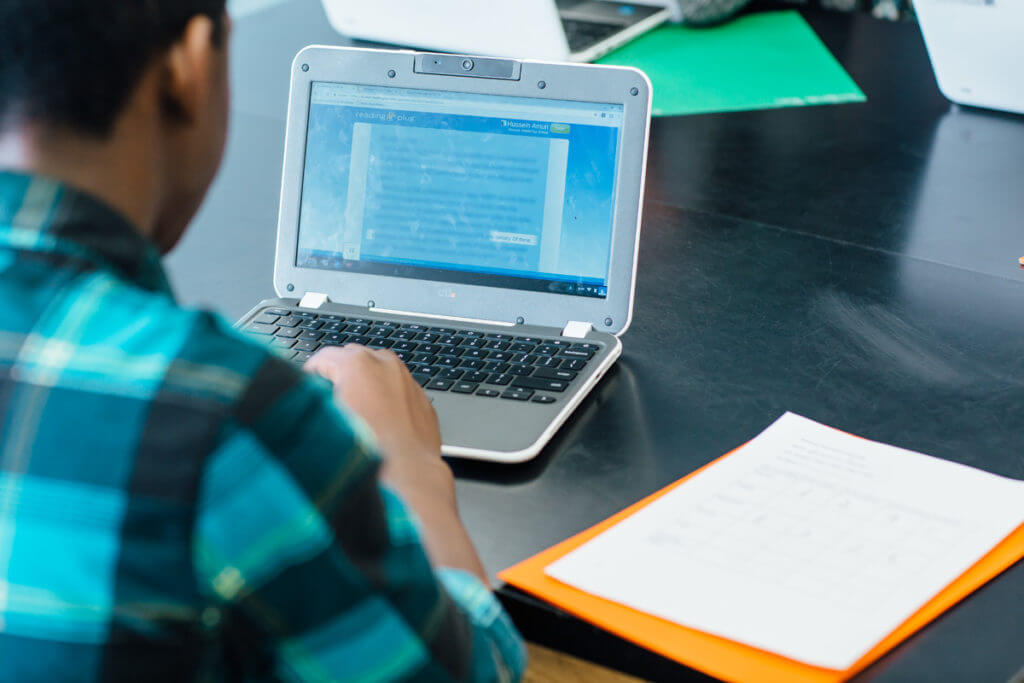
According to a 2019 study by the National Center for Education Statistics, almost two-thirds of our nation’s students are below proficient in reading for the entirety of their primary and secondary school careers. Consequently, nearly every school district has implemented or plans to implement a reading intervention program that yields rapid results.
However, not every reading intervention program is made equal, and there are a lot of factors to consider before you make the investment.
1. Evidence of Effectiveness
It should come as no surprise that evidence of effectiveness is considered to be the biggest influence on decision-making for the majority of educators. When the Every Student Succeeds Act (ESSA) was passed in 2015, educators increased their focus on programs with evidence of impact to ensure better student outcomes.
“Effectiveness is huge, and most programs have some measures of data,” says Larry Shifflett, Assistant Superintendent of Innovation and Learning for Rockingham County Public Schools. “We rely on our teachers and their expertise to say, ‘here [are] the gains we’re seeing with the kids, and here’s the ease of the program and how it works’…so teacher buy-in is tremendous. They’ll know if it’s a good program or not.”
2. Teacher Buy-In
Of course, teacher judgment follows close behind, as a reading intervention can be implemented in a broad range of contexts, including across the whole school, in a subject-area classroom, or through a supplemental program. Teachers will be the ones directing and overseeing student use of the program, so having their buy-in is critical.
Although a wealth of success stories from other schools and districts can point you in the right direction, you should also consider piloting the program in your particular school or district to understand if it’s right for you.
After all, as Shifflett says, “The programs are no better than the people who run them…. We’re professionals, we’re the educators—and the programs are tools and resources we use to move [students] along.”
3. Flexibility with Hybrid and Remote Learning
Therefore, Shifflett advises, when you evaluate reading intervention programs, you should consider their flexibility and ensure that you’re taking into account teachers’ opinions of each program. How well can your teachers work with and around the program to maximize its effectiveness?
As a teacher working directly with students in the classroom, Beth Carabetta, Reading Coach, Maloney High School in Meriden, CT, sets her students up for success by remaining flexible in her instructional approach, allowing students to select the texts of most interest to them, and encouraging students to continue their reading practice outside of the classroom.
“Another thing that’s important to student success is being able to offer anytime-anywhere learning,” she continues. “To really make gains in reading, being able to utilize a program not only within the walls of the classroom but outside of the classroom as well.”
4. Student Choice and Control
“Students—especially at the high school level—like to have a choice in the materials they’re reading and have some control over what they’re reading, provided that it’s at their level,” says Carabetta. “With the Reading Plus program, that’s definitely something that students have the ability to do.”
That flexibility and control over what, when, and where students can engage with texts is one of the key characteristics to look for in your reading intervention.
“We were looking for [a reading intervention program] to give students confidence and make them feel empowered,” agrees Susan Perrone, Supervisor of Curriculum & Accountability, Meriden Public Schools, who supports Carabetta at the district level. “We wanted to make sure that, as secondary students, they weren’t looking at things that were elementary. We wanted a program that had choice…that motivated them to change…that made them want to learn. Reading Plus really seemed to hit that mark.”
Choosing an easy-to-use, flexible, and evidence-based intervention program will help you maximize your return on investment.
ABOUT READING PLUS
Reading Plus focuses on fluency, comprehension, and vocabulary, three of the five essential pillars of reading. These three pillars are critical as students make the shift from the learning-to-read stage to the reading-to-learn stage of reading development and ultimately become proficient readers who can effectively use reading for learning at grade level. In addition, the program brings in the additional essential dimension of motivation for reading by measuring each student’s self-improvement belief, confidence, and interest in reading, and by increasing students’ intrinsic motivation for reading. All of these components come together to develop reading proficiency.
Curious about how quickly your students could achieve grade-level reading proficiency with Reading Plus? Click the link below to view our Expected Growth Calculator to discover the potential gains for your struggling readers.




